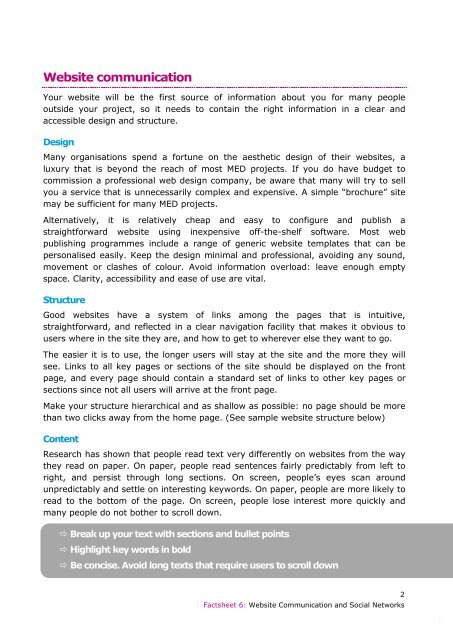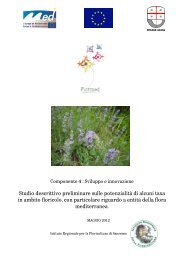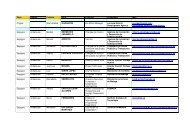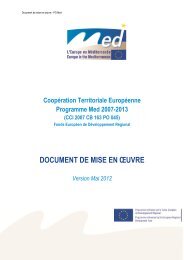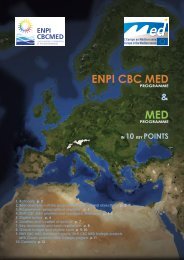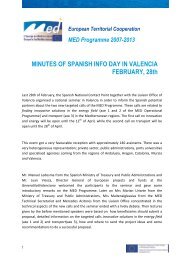MED Communication Handbook - Programme Med
MED Communication Handbook - Programme Med
MED Communication Handbook - Programme Med
Create successful ePaper yourself
Turn your PDF publications into a flip-book with our unique Google optimized e-Paper software.
Website communication<br />
Your website will be the first source of information about you for many people<br />
outside your project, so it needs to contain the right information in a clear and<br />
accessible design and structure.<br />
Design<br />
Many organisations spend a fortune on the aesthetic design of their websites, a<br />
luxury that is beyond the reach of most <strong>MED</strong> projects. If you do have budget to<br />
commission a professional web design company, be aware that many will try to sell<br />
you a service that is unnecessarily complex and expensive. A simple “brochure” site<br />
may be sufficient for many <strong>MED</strong> projects.<br />
Alternatively, it is relatively cheap and easy to configure and publish a<br />
straightforward website using inexpensive off-the-shelf software. Most web<br />
publishing programmes include a range of generic website templates that can be<br />
personalised easily. Keep the design minimal and professional, avoiding any sound,<br />
movement or clashes of colour. Avoid information overload: leave enough empty<br />
space. Clarity, accessibility and ease of use are vital.<br />
Structure<br />
Good websites have a system of links among the pages that is intuitive,<br />
straightforward, and reflected in a clear navigation facility that makes it obvious to<br />
users where in the site they are, and how to get to wherever else they want to go.<br />
The easier it is to use, the longer users will stay at the site and the more they will<br />
see. Links to all key pages or sections of the site should be displayed on the front<br />
page, and every page should contain a standard set of links to other key pages or<br />
sections since not all users will arrive at the front page.<br />
Make your structure hierarchical and as shallow as possible: no page should be more<br />
than two clicks away from the home page. (See sample website structure below)<br />
Content<br />
Research has shown that people read text very differently on websites from the way<br />
they read on paper. On paper, people read sentences fairly predictably from left to<br />
right, and persist through long sections. On screen, people’s eyes scan around<br />
unpredictably and settle on interesting keywords. On paper, people are more likely to<br />
read to the bottom of the page. On screen, people lose interest more quickly and<br />
many people do not bother to scroll down.<br />
� Break up your text with sections and bullet points<br />
� Highlight key words in bold<br />
� Be concise. Avoid long texts that require users to scroll down<br />
� Factsheet 6: Website <strong>Communication</strong> and Social Networks<br />
2<br />
�


